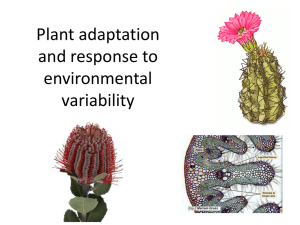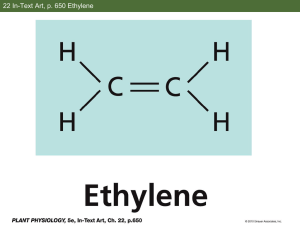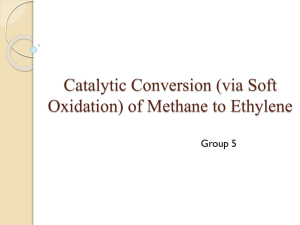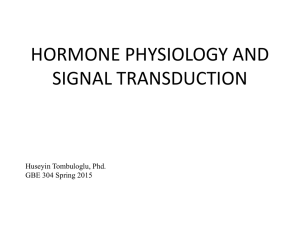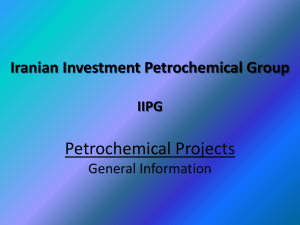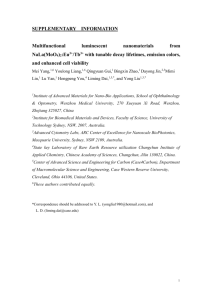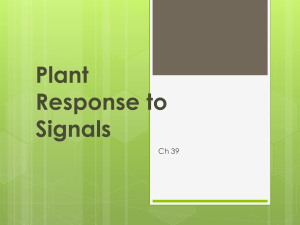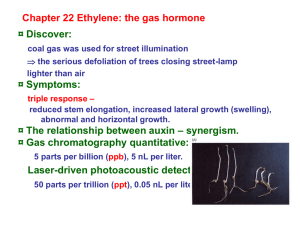Production of Ethylene Oxide
advertisement
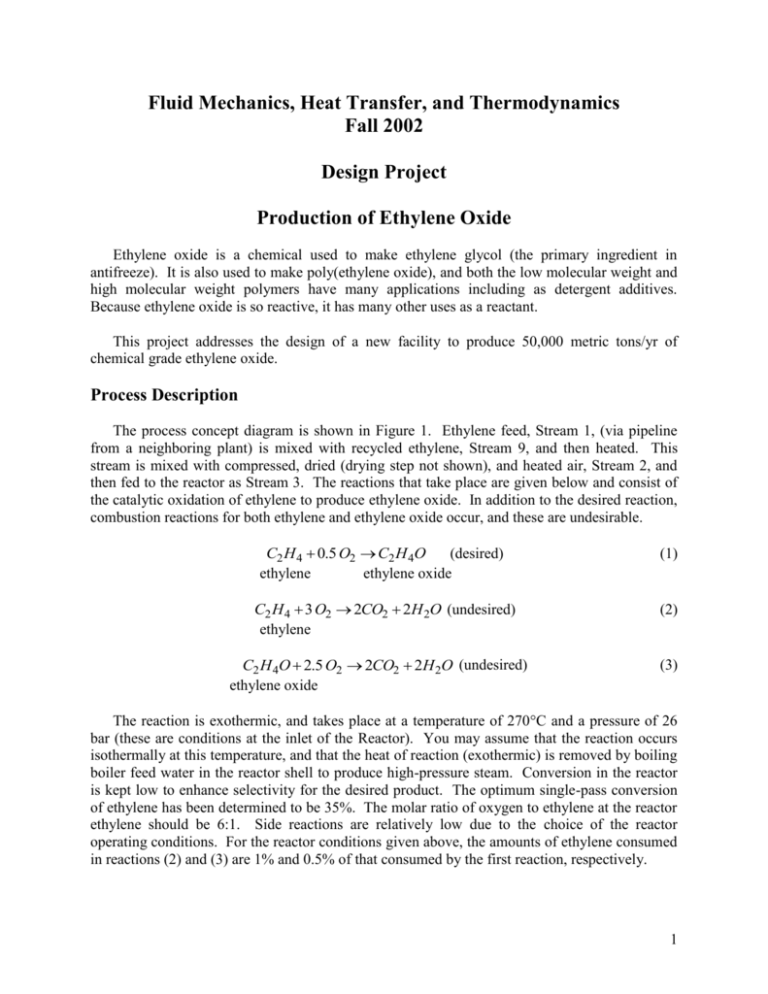
Fluid Mechanics, Heat Transfer, and Thermodynamics
Fall 2002
Design Project
Production of Ethylene Oxide
Ethylene oxide is a chemical used to make ethylene glycol (the primary ingredient in
antifreeze). It is also used to make poly(ethylene oxide), and both the low molecular weight and
high molecular weight polymers have many applications including as detergent additives.
Because ethylene oxide is so reactive, it has many other uses as a reactant.
This project addresses the design of a new facility to produce 50,000 metric tons/yr of
chemical grade ethylene oxide.
Process Description
The process concept diagram is shown in Figure 1. Ethylene feed, Stream 1, (via pipeline
from a neighboring plant) is mixed with recycled ethylene, Stream 9, and then heated. This
stream is mixed with compressed, dried (drying step not shown), and heated air, Stream 2, and
then fed to the reactor as Stream 3. The reactions that take place are given below and consist of
the catalytic oxidation of ethylene to produce ethylene oxide. In addition to the desired reaction,
combustion reactions for both ethylene and ethylene oxide occur, and these are undesirable.
(desired)
C2 H 4 0.5 O2 C2 H 4O
ethylene
ethylene oxide
(1)
C2 H 4 3 O2 2CO2 2H 2O (undesired)
ethylene
(2)
C2 H 4O 2.5 O2 2CO2 2H 2O (undesired)
ethylene oxide
(3)
The reaction is exothermic, and takes place at a temperature of 270C and a pressure of 26
bar (these are conditions at the inlet of the Reactor). You may assume that the reaction occurs
isothermally at this temperature, and that the heat of reaction (exothermic) is removed by boiling
boiler feed water in the reactor shell to produce high-pressure steam. Conversion in the reactor
is kept low to enhance selectivity for the desired product. The optimum single-pass conversion
of ethylene has been determined to be 35%. The molar ratio of oxygen to ethylene at the reactor
ethylene should be 6:1. Side reactions are relatively low due to the choice of the reactor
operating conditions. For the reactor conditions given above, the amounts of ethylene consumed
in reactions (2) and (3) are 1% and 0.5% of that consumed by the first reaction, respectively.
1
Fuel Gas
Recycled Ethylene
8
9
R-701
hps
E-702
hps
Ethylene
3
1
E-703
cw
Ethylene Oxide
4
C-701A-...
Separations
Equipment
5
E-701
hps
bfw
Waste Water
Air
7
2
Water
6
Figure 1: Process Concept Diagram for Ethylene Oxide Production Facility
2
The process stream leaving the reactor (called the “reactor effluent”) is cooled, and this
stream, Stream 4, is sent to the separations unit where ethylene oxide is separated to the desired
99.5 wt% purity and sent to storage, Stream 5. In order to separate the product ethylene oxide
from the unreacted ethylene and air, water, Stream 6, is used to absorb the ethylene oxide prior to
purification by distillation. The ratio of required water feed to ethylene oxide product is 100:1 by
mole. You should assume that the water enters the process at 25C and that it all leaves the
separation section as a saturated liquid at 10.5 bar, Stream 7. The total heating requirements for
the separations section are equal to twice that required to heat the water stream from 25C, to a
saturated liquid at 10.5 bar. Condensing high-pressure steam satisfies the heating requirements.
Likewise, the cooling requirements of the separation section are satisfied using cooling water and
the cooling duty is equal to (and opposite) to the heating duty.
The unreacted ethylene, oxygen, carbon dioxide, and nitrogen are recycled back to the front
end of the process, Stream 9, with a portion of this gas being purged as a fuel gas or waste
stream, Stream 8.
Specific Objectives of this Project
The main objective of this project is to optimize the feed section of the ethylene oxide
process. In order to do this, you will need to establish the flows and temperatures of all streams
(Streams 1 –9) in Figure 1. You should use the Chemcad process simulator to do this task using
the SRK thermodynamics package.
Once flows and temperatures are set, you should complete each of the following miniprojects that relate ChE 310, 311, and 320.
Thermodynamics (ChE 320) Mini-Project
In Figure 1, only one air compressor is shown. Since the reactor operates at 26 bar pressure,
several stages of compression, with inter-cooling, may be necessary. The purpose of this miniproject is to find the optimum compressor arrangement for the design air flowrate. The
efficiency of each compression stage may be assumed to be 75%. The costs for heat exchangers,
compressors, and utilities are all given in the Appendix to this problem statement. For the sake
of this mini-project, you may assume that the pressure drops for all inter cooling heat exchangers
are 3 psi, and the pressure drops between equipment are 1 psi. The pressure drop through the
steam heater, E-701, may be assumed to be 3 psi and the pressure drop from E-701 to R-701 may
be assumed to be 5 psi. As described in the Fluids section, a drier/filter must be placed upstream
of the first compressor and the pressure drop across it may be assumed to be 3 psi.
The above optimization should be done using Chemcad using the SRK enthalpy option. The
cost of compressors, inter-cooling heat exchangers, cooling water, and electrical utilities should
be included in the optimization. Since capital costs ($) and operating costs ($/yr) have different
units, the capital costs must be amortized before they can be added to the operating costs. The
3
appropriate objective function to optimize is the equivalent annual operating cost (EAOC) that is
defined below:
EAOC ($ / yr ) { Installed Cost of Equipment ($)}{A / P, i, n} Utility Costs ($ / yr )
(4)
Where {A/P, i, n} = i(1+i)n/[(1+i)n-1], i is the annual interest rate, and n is the number of years
for the analysis. For your calculations, you should use i = 7% per year (i = 0.07) and n = 10
years. Note that only the costs associated with the feed air handling system should be used in
Equation (4).
Once the optimum compressor configuration has been obtained, you should investigate the
effect of using a different thermodynamics packages on the power requirement and capital cost
of the compressor arrangement. Specifically, you should use the Peng-Robinson and Latent Heat
enthalpy options and compare the results with those obtained from the SRK method.
Fluid Flow (ChE310) Mini-Project
You are required to find the optimum pipe sizes and make the pressure drop calculations for
the air handling system that includes all piping, pipe fittings, the air filter, and all heat
exchangers between the air filter and the reactor inlet. Specifically, you should assume the
following:
The air feed should be taken from the environment (14.7 psi and 20C) and compressed
via a series of compressors (see the section on Thermodynamics).
Before compression, the air must flow through a drier/filter to remove any residual
moisture and particulates. The drier/filter is standard equipment, and the vendors
recommend that at the design flow a pressure drop of 3 psi be used.
The air should pass through the shell side of any heat exchanger used to heat or cool it.
For any heat exchanger for which a detailed design is not performed (see the Heat
Transfer section), a pressure drop of 3 psi should be used, for the air-side. For any heat
exchanger for which a detailed design is required, the pressure drop must be calculated
from the information in the detailed design.
For each piece of equipment in the feed air line (compressors, heat exchangers,
drier/filter), isolation gate valves and a bypass line should be provided to allow for use in
the event of unscheduled maintenance. The sketch below illustrates this arrangement.
Equipment
Gate valves
(normally open)
Globe valve
(normally closed )
4
Each piece of equipment will be separated by at least 10 ft of piping to allow for
maintenance.
The piping between the last piece of equipment before the reactor (E-701) and the reactor
itself, should consist of 50 ft of straight pipe, 6 - 90 standard elbows, a gate valve, an
orifice meter with a full scale reading of 100 inches of water pressure drop (the design
flow should be 50% of full scale), the orifice meter should have two isolation gate valves
and a bypass (similar to the arrangement for equipment shown in the sketch above), and a
tee (used as an elbow with the other leg used as the inlet point for the ethylene feed).
The choice of where to add the ethylene stream is left up to you.
The optimization of the piping arrangement should be done using the results of the optimum
compressor arrangement, described above, as the starting point. Note that when doing this
optimization, the compressor loads may have to be varied from the “optimum” found in the
Thermodynamics section. This is because piping pressure drops were assumed in the previous
optimization while they are calculated in this optimization. The optimization for this miniproject should take into account the cost of the compressors, the cost of the intercoolers, the cost
of pipe and fittings, the cost of cooling water, and the cost of electricity. Again the EAOC,
defined in Equation (4), should be used as the objective function. The equipment that should be
considered in this optimization includes the cost of the compressors, heat exchangers, and piping,
and the cooling water and electrical utility costs. Note that after this optimization, you may have
slightly different values for compressor loads that you found in the Thermodynamics miniproject. It is unnecessary to iterate and “reoptimize” the compressor configuration in the
Thermodynamics section.
Calculations for the optimum pipe size should be included in an appendix for this miniproject.
Heat Transfer (ChE 311) Mini-Project
You should perform a detailed design of the first inter-cooler heat exchanger (after the first
compressor). You should assume that cooling water is available at the conditions specified in the
appendix of this problem statement. For this heat exchanger design, you should report the
following information:
Diameter of shell
Number of tube and shell passes
Number of tubes per pass
Tube pitch and arrangement (triangular/square/..)
Number of shell-side baffles and their arrangement (spacing, pitch, type)
Diameter, thickness, and length of tubes
Calculation of both shell- and tube-side film heat transfer coefficients.
Calculation of overall heat transfer coefficient (you may assume that there is no fouling
on either side of the exchanger).
5
Heat transfer area of the exchanger
Shell-side and tube-side pressure drops (note that the shell-side pressure drop is used for
the fluids mini-project)
A detailed sketch of the exchanger should be included along with a set of comprehensive
calculations in an appendix to the mini-project.
Deliverables
Written Reports
Each group must deliver a report written using a word processor. Three identical copies
should be submitted, one for each instructor. The written project reports are due by 1:00 p.m.
Friday, November 22, 2002. Late projects will receive a minimum of a one letter grade
deduction.
The report should be clear and concise. For the correct formatting information, refer to the
document entitled Written Design Reports. The report must contain a labeled PFD and a stream
table, each in the appropriate format. The PFDs from CHEMCAD are generally unsuitable
unless you modify them significantly. Figure 1 should be used as a template for your PFD.
When presenting results for different cases, graphs are superior to tables. For the optimal case,
the report appendix should contain details of calculations that are easy to follow. There should
be separate appendices for each “mini-project.” These may be hand written if done neatly,
alternatively, excel spreadsheets may be included, but these must be well documented so that the
reader can interpret the results. Calculations that cannot be easily followed and that are not
explained will lose credit.
Since this project involves “mini-designs,” it is suggested that the report be organized as
follows. There should be a general abstract and introduction. Then, there should be a results
section followed by a discussion section for each “mini-design.” General conclusion and
recommendation sections should follow. At a minimum, there should be one appendix for each
of the “mini-designs.” With this organization, there is no need for a separate section of the
report for each class, as suggested in the document entitled Written Design Reports.
In order to evaluate each group members writing skills, the results and discussion sections
for each mini-design should be written by a different group member. The authorship of each of
these mini-reports should be clearly specified in the report. For groups with four members, the
member not authoring a mini-report should author the safety analysis report, which is described
below. The remainder of the report, namely the general abstract, general introduction, general
conclusions, and general recommendations sections should be a group effort.
Safety Analysis Report
When designing a chemical process, it is important to know the properties of the chemicals
being consumed and produced in the process. The reactivity and toxicity of the reactants and
products will not only affect the design but will also affect the procedures that might be
6
implemented during an unscheduled event such as an emergency shutdown. The purpose of the
Safety Analysis Report is to make management aware of risks to personnel due to the
flammability and toxicity of all chemicals consumed or produced in the process. As a minimum,
the MSDS (material and safety data sheets) for all these chemicals should be provided in an
appendix, and a brief description of the major concerns for each chemical should be given.
Finally, a feature of your process design that addresses one of these concerns should be
explained.
Oral Reports
Each group will give an oral report in which the results of this project will be presented in a
concise manner. The oral report should be between 15-20 minutes, and each group member
must speak. Each group member should speak only once. A 5-10 minute question-and-answer
session will follow, and all members must participate. Refer to the document entitled Oral
Reports for instructions. The oral presentations will be Tuesday, December 3, 2002 from 11:00
am to 2:00 pm. Attendance is required of all students during their classmates’ presentations (this
means in the room, not in the hall or the computer room). Failure to attend any of the aboverequired sessions will result in a decrease of one-letter grade (per occurrence) from your
project grade in ChE 310, ChE 311, and ChE 320.
Anyone not participating in this project will automatically receive an F for
ChE 310, ChE 311, and ChE 320, regardless of other grades earned in these
classes.
Groups
You will do this project in a group of three or four. You have already selected a partner, and
groups of two have been paired up by the instructors. Since there are 18 students doing the
project, there will be 5 groups. There will be 3 groups of 4 and 2 groups of 3.
Revisions
As with any open-ended problem (i.e., a problem with no single correct answer), the problem
statement above is deliberately vague. The possibility exists that, as you work on this problem,
your questions will require revisions and/or clarifications of the problem statement. You should
be aware that these revisions/clarifications may be forthcoming.
7
Appendix
Equipment Cost and Design Data
8
Raw Materials
Ethylene
see Chemical Market Reporter
Product
Ethylene Oxide
see Chemical Market Reporter
Utility Costs
Low-Pressure Steam (618 kPa saturated)
$6.62/1000 kg
Medium-Pressure Steam (1135 kPa saturated)
$7.31/1000 kg
High-Pressure Steam (4237 kPa saturated)
$8.65/1000 kg
Natural Gas (446 kPa, 25C)
$3.00/GJ
Fuel Gas
$2.75/GJ
Electricity
$0.06/kW h
Boiler Feed Water (at 549 kPa, 90C)
$2.54/1000 kg
Cooling Water
$0.35/GJ
available at 516 kPa and 30C
return pressure 308 kPa
return temperature is no more than 15C and no less than 5C above the inlet temperature
Deionized Water
available at 5 bar and 30°C
$1.00/1000 kg
Wastewater Treatment
$50/1000 m3
9
Equipment Costs (Purchased)
Note that not all this information is required to do this project
Piping
straight pipe
fittings (except valves)
$/m = 5.0 (nominal pipe diameter, in)(1+sch #/20)0.25
sch = schedule number for pipe
use the same sch number same for fittings and valves
$/fitting = 50.0 (nominal pipe diameter, in)(1+sch #/20)0.25
Valves for gate (isolation) valves
for control valve use
$100 (nominal pipe diameter, in)0.8 (1+sch #/20)0.25
$1000 (nominal pipe diameter, in)0.8(1+sch #/20)0.25
Pumps
$630 (power, kW)0.4
Heat Exchangers
$1030 (area, m2)0.6
add 50% additional for boilers or evaporators
Compressors
$770 (power, kW)0.96 + $400 (power, kW)0.6
assume 70% efficiency
Turbine
$2.18105 (power output, MW)0.6
assume 65% efficiency
Fired Heater
$635 (duty, kW)0.8
assume 80% thermal efficiency
Vessels
$[1.67(0.959 + 0.041P - 8.310-6P2)]10z
z = (3.17 + 0.2D + 0.5 log10L + 0.21 log10L2)
D = diameter, m 0.3 m < D < 4.0 m
L = height, m 3 < L/D < 20
P = absolute pressure, bar
Reactor
assume to be $1 million
Tanks
$1000V0.6
V = volume, m3
10
Equipment Cost Factors
Pressure Factors
Pressure
(absolute)
Material Factors
Carbon Steel
Stainless Steel
< 10 atm, 0.0
10 - 20 atm, 0.6
20 - 40 atm, 3.0
40 - 50 atm, 5.0
50 - 100 atm, 10
does not apply to turbines, compressors, vessels,
packing, trays, or catalyst, since their cost
equations include pressure effects
0.0
4.0
Total Installed Cost = Purchased Cost (4 + material factor + pressure factor)
Heat Exchangers
For heat exchangers that do not have to be designed in detail, use the following
approximations for heat transfer coefficients to allow you to determine the heat transfer area and
heat exchanger cost.
situation
h (W/m2 C)
condensing steam
6000
condensing organic
1000
boiling water
7500
boiling organic
1000
flowing liquid
600
flowing gas
60
11
Other Information
You should assume that a year equals 8000 hours. This is about 330 days, which allows for
periodic shutdown and maintenance.
Unless specifically stated in class, the information in this document is valid for this project
only. Any information in the sophomore projects not specifically stated in this document is not
valid for this project.
12
